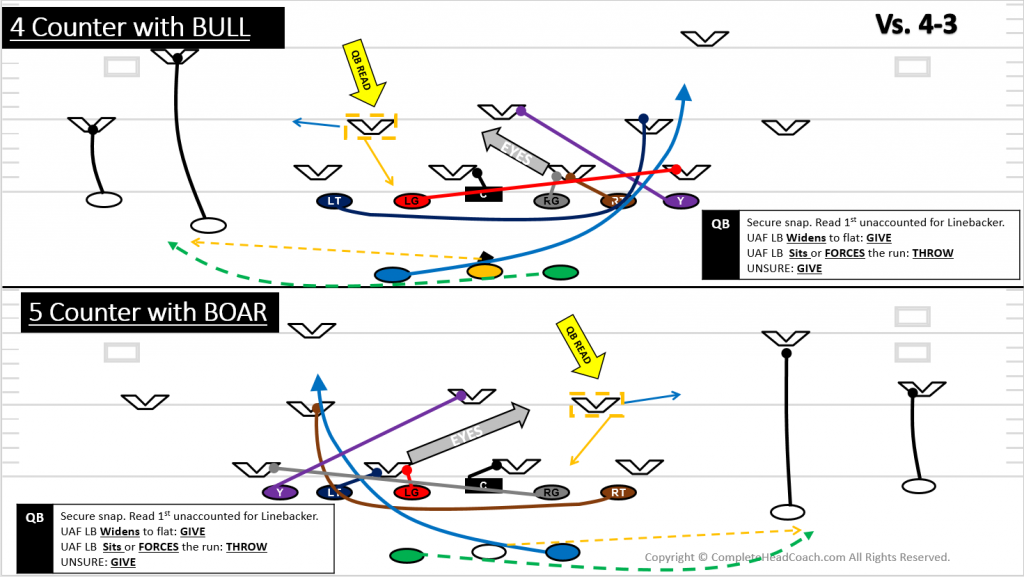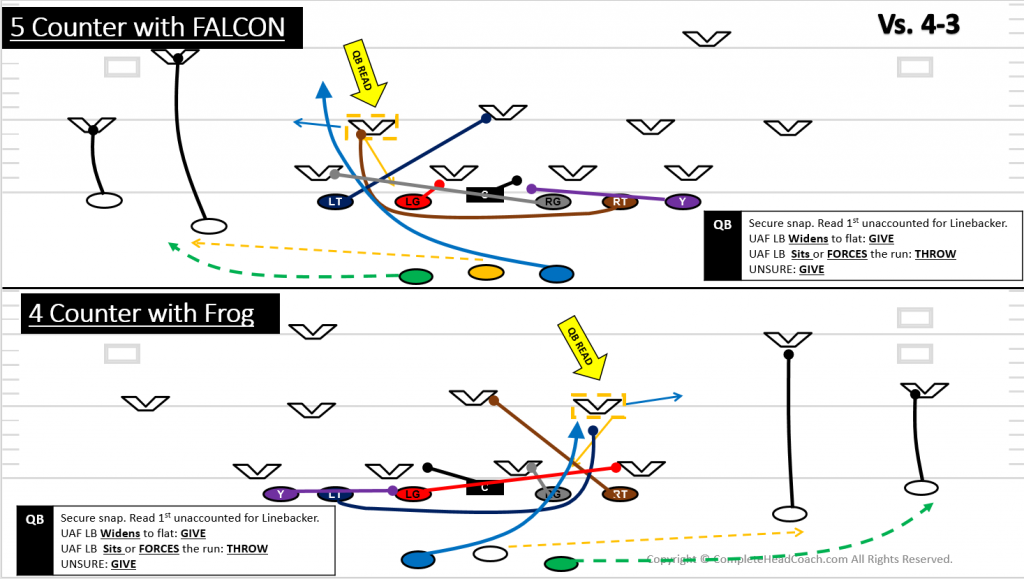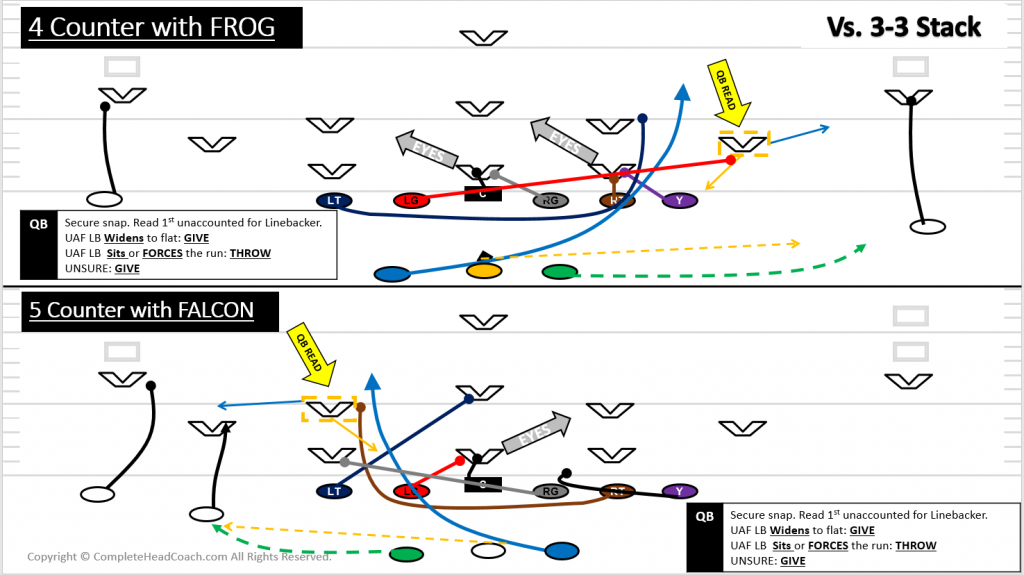
This past year we had a really good stable of running backs, but also like to be a single back spread team to take more defensive guys out of the box. The less guys we need to block, the better. Our answer was to use backfield motions to create flow movement and misdirection in the backfield with some simple motions. We are a split back shotgun spread team on offense. We like having the back offset rather than in the pistol because we like to have the ability to run our quarterback and I feel that is easier to do with the back offset to one side or the other. Using backfield motion is not a new concept that we invented. Like most coaches, the idea was sparked after watching Oklahoma use it and run counter GT a couple years ago. Counter has been and continues to be one of our best plays so it fit in well to our offense and what we are trying to do offensively. I will use Counter to go through our backfield motion. This video shows the concept Oklahoma used.
Our goals on offense are always to keep it simple for the linemen and the QB. This concept does that. Our Linemen simply run the play that is called. Our QB has the task of finding the unaccounted for linebacker and reading him. The rules are very simple and almost make this a pre-snap decision.
QB RULES:
Secure snap. Read 1st unaccounted for Linebacker (UAF LB).
UAF LB Widens to flat: GIVE
UAF LB Sits or FORCES the run: THROW
UNSURE: GIVE
Word Families
To incorporate the motion, we set out to create a word family that allows us to tag the backside or front side back in a motion. For our purposes, a backside motion takes the front side back and motions him away from the play direction and a front side motion takes the front side back and motions him to the play direction. Let’s say for example, the backside back motions are “BoaR” and “BuLL”. “Boar” would tell the backside back to motion behind the QB to the right and “Bull” would tell the backside back to motion behind the QB to the left. With this concept, we are trying to eliminate that backside LB run through that can chase down the counter from the back side. These motions are shown in the diagram below:

As you can see, the motion creates a restraint for the backside linebacker. For the QB, this is pretty much a pre-snap read on the RPO. If the LB widens with the motion, it is a “give” read. If the LB stays, it is a throw read and we throw the swing to the motion back. I realize the diagram is against a 2 high defense, but the read is the same with a 1 high safety. Defenses can do some DB rotations that allows the linebacker to stay in the box, but when that happens we have still created movement and forced somebody on the defense to account for that guy. The diagram against a single High safety is below:

With the play diagram on the bottom, you could technically read the inside stack LB and send the Tight End out to block the outside linebacker. We just like to keep our rules the same for players not involved such as the TE in this case.
Video
Here is some video of the backside motion in action.
The second backfield motion is designed to create a front side or play side conflict for the defense. We will call these motions “FaLcon” and “FRog” just to stay in the same “animal” family and make them easy to remember. You can use any terminology that fits your system. “Falcon” tells the Front side back to motion Left and “Frog” tells the frontside back to motion to the right. The concept with this front side motion is to put the front side force player in conflict. The diagram is below:

As you can see in the diagram above, we have the defense outnumbered at the point of attack if the LB bumps out with the motion and the swing puts us 3 on 2 if the LB stays put. Against a 1 high team, little changes per the diagram below:

With one high defense, the Free safety could be the adjuster and rotate with the motion. When that happens there is not an alley force player and if we get it blocked up front, it is off to the races.
Overall, using simple motions like this force the defense to think and move pre-snap. A thinking defense is a slow defense so we want those guys thinking as much as possible. This also allows us to use two backs, which fit our personnel a little better while keeping an extra player out of the box or in conflict. I hope this helps in some way. Thanks for reading.
Leave a Reply